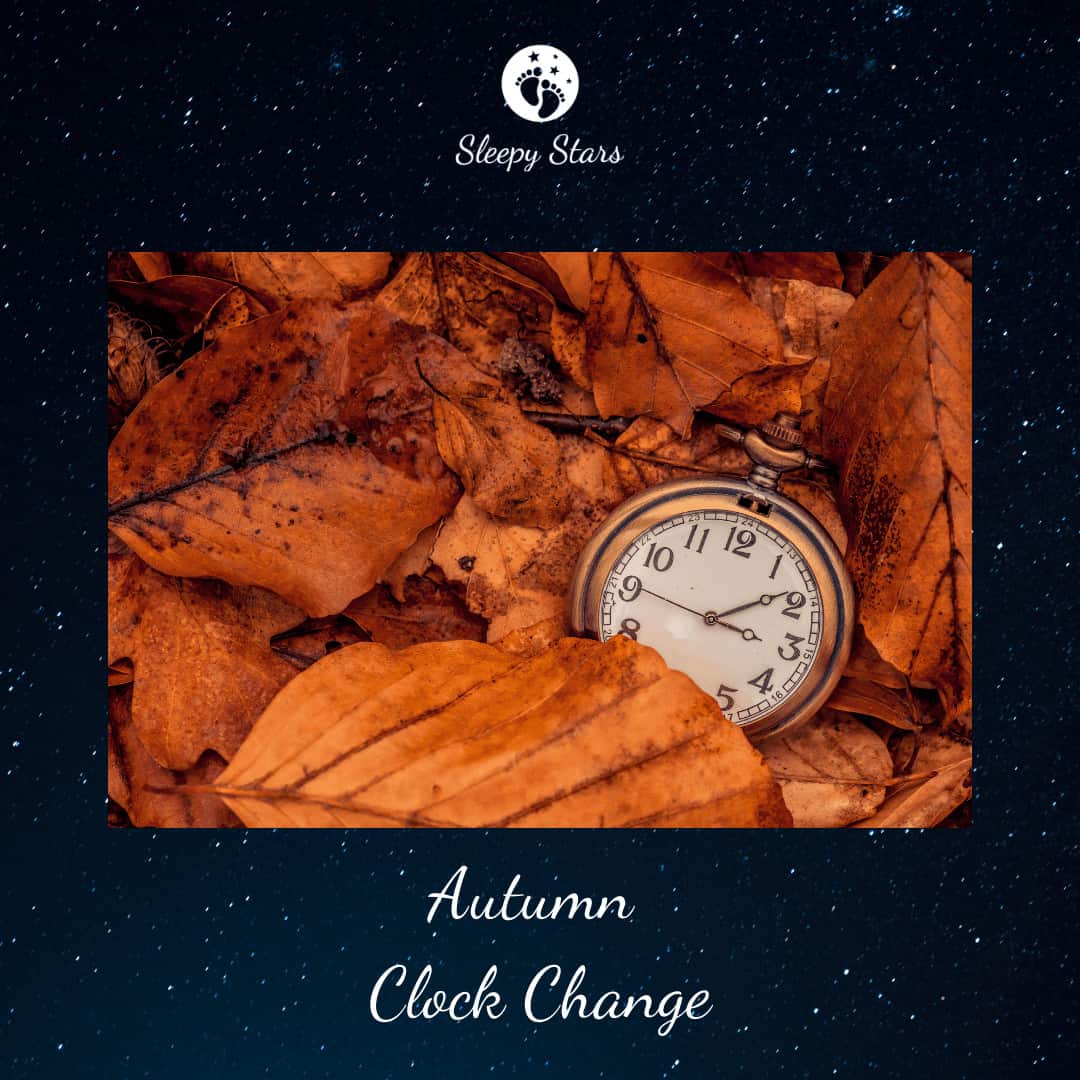
So, on Sunday the 27th of October, 2024 at 2am the clocks “fall” back. Here’s what to do in order to help adjust your child’s routine on to the “new” time.

 Firstly: Don’t Panic
Firstly: Don’t Panic
Children are extremely adaptable. In the past I have travelled internationally with children of all ages. Going from the UK to Australia is a bit of a challenge, but I can adapt children (babies and toddlers) to these major time zone differences within three days. Once you know how it’s actually very easy.
I’m aware that you have probably put a lot of effort in to getting your child sleeping well through the night, and I promise an hours difference is not going to destroy your lovely nights. If your child can settle and resettle without assistance that’s the hard part done; the easy part is shifting the body clock.

 Secondly: Choose your Approach.
Secondly: Choose your Approach.
You have a couple of options here:
- You can take the Baby Steps Approach – planned, slow and steady,
- or the “Aeroplane to Spain” Approach
Over the years when I have been working with families, the clock change has crept up on me. I usually acknowledge that it’s coming in early October and then forget until it’s the night before. So I’m a little caught out and kicking myself for forgetting … again. And then it’s the “aeroplane to Spain” approach that’s needed.
I have on occasion – rare occasions – used the planned approach and I’m secretly delighted with myself for being so organised. The planned Baby Steps approach is to slowly move your child’s routine on to the “new time” over the course of a week.

 The Baby Steps Approach.
The Baby Steps Approach.
With this approach we are aiming to slowly shift your child’s circadian rhythm towards the “new time” in order to make the adjustment less severe. Note: This approach is really for babies / children cared for at home – it’s not really possible to have control of this when your child attends day care.
- Start 5 – 6 days before the clocks go back
- Begin to put your child to bed approximately 10 minutes later each night until Saturday night. The first step for example, would be to move a 7pm bedtime to 7:10pm
- Stretch your child’s nap times later by 10 mins each day. Having a completely darkened room will help achieve good naps – even for the best sleeper I have used the black-out blind when I’m adjusting to clock changes or new times zones. At night, from 12 weeks old, your child produces the hormone, melatonin, which helps them sleep, but during the day time this is not produced so ideal sleeping environments and a strong body clock are very important. (Please do not leave black-out blinds up all day every day – the room can get very warm – and you need to allow fresh air to circulate). I also recommend that once you have your naps on track you begin to introduce a little light back into the bedroom during the day so that you encourage your child to be a little more of flexible sleeper – once you have a strong sleep rhythm a little light won’t interfere with this. In case you don’t already have one there’s the Sleepy Stars Portable Black-Out Blinds and we have free shipping to all locations in Ireland for the month of October. https://sleepystars.ie/shop
- Moving the feed time slightly later each day will also help your child to adjust. Delay breakfast / lunch / dinner a little each day. Keeping them out of the kitchen / eating environment and using your best distraction methods will help. It’s also important to note that children don’t really have any concept of time, but babies from a very young age have very strong “location associations”, so by keeping them out of their usual feeding environment until the new feed time will help you move their milk / solid feed times.
- By Saturday night your child’s bedtime should be 8pm, which will be the new 7pm on Sunday night.
- Wake your child at the new time of 7:15am after the clock change

 The “Aeroplane to Spain” approach.
The “Aeroplane to Spain” approach.
So the best way that I can explain this is by going on holiday to a location that only has an hour’s time difference to your home time zone.
Pre-Covid, when families could travel, I was often asked how to adjust a child’s routine on to and back from a different time zone. Here is my advice:
- As soon as you arrive at your destination (not the airport, the actual hotel or resort that you are staying in) look at the clock and see what time it is. Whatever time it is that is now your baby’s “new time”. Totally disregard any extra naps / snacks etc that may have occurred on the journey. For example, if it’s dinner time at home then sit down and try to have some dinner; if it’s nap time then go for a walk and offer some sleep / quiet time.
- A solid bedtime routine is key to this method. Again your child doesn’t know what time it is so when you signal to them that sleep is due with sleep cues – low lighting, bath, story, bottle etc – then they will know it’s time to sleep.
- Often, after a long flight, the last thing I want to do it is to run a bath for children and read stories, but I have done this many many times and it’s so worth it. It allows the children to adjust to the new environment before sleep. For example, after a flight to Barbados with a family I worked for got delayed – yes, even private jets get delayed because of storms! – we arrived at 4am with children who had the most disrupted daily routine due to travel / delays etc. But, you know what happened? They slept! Why? No, not because I’m Mary Poppins or a witch, but because their routine told them it’s time to sleep and I offset any unscheduled naps with extra activity.
- So let’s bring this concept in to our clock change. On clock change day, if you didn’t get to prepare in advance – don’t panic. On that day you can slowly move everything a little later, encourage lots of active play and a slightly later longer nap if possible. If your child is on solids then spend a little longer at the dinner table, take a little longer in the bath and read your bedtime stories a little slower. Ok you might not get to 8pm but you’ll get close and then the next day you just begin your day on the “new time”. Tip: when I want children to make longer stretches between meals I use filling proteins and carbs. Depending on the age of the child, I also may offer another ounce in the bottle to keep them satisfied slightly longer in order to get to the new feed times.
I hope this will help when the clocks go back on 27th October. I’ll let you know how to do it the other way in March when the clocks “spring” forward.
If you know anyone this may help please do pass it on to I hope you found this useful.
Sweet dreams,
Kelly
Check out The Sleepy Stars Store for products that I have designed and recommend to parents.
Thank you for supporting a local business.


